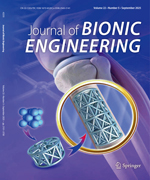The coffee ring effect commonly exists in droplet deposition patterns, which fundamentally affects scientific research and industrial applications, like pharmaceutical purification, salt manufacturing, etc. Some researchers have tried different solutions to control the distributions of droplet deposition patterns, but most control deposits by adjusting droplet characteristics. In this work, droplet deposition patterns with different wettability are investigated by both localized and substrate heating. A whole process of droplet evaporation is recorded. The droplet generally evaporates from Constant Contact Radius (CCR) mode to Constant Contact Angle (CCA) mode, and CCR stage occupies the most of time. Experimental results show that, without any chemicals, laser induced local heating transitions particle deposition patterns from ring-like structure to dot-like patterns on a hydrophilic surface, driving most saline solvent to the center. Meanwhile, a hydrophobic surface is also investigated showing that the particles tend to assemble at the central area, but the pattern is slightly different compared to that on hydrophilic surface. In addition, physical mechanisms of local heating and heating from substrate are also explored.

 Table of Content
Table of Content
 Table of Content
Table of Content